Page 756 More Big Hill Country 2009
1st Generation
Francis Towers left Birmingham, England in 1856 at the age of 18. He worked his way to Canada by helping on a cattle boat. Hearing of work on the Canadian Pacific Railway, he headed for Toronto. While in Toronto he met and married Elizabeth Glover, who had come to Canada from the Guernsey Islands, just off the coast of France. She had been diagnosed with tuberculosis and the doctors gave her six months to live. However, she lived to the ripe old age of 88 years.
Eventually, Francis Towers was promoted to Canadian Pacific Railway foreman and was given the job of laying the tracks from Winnipeg westward. As Alberta was not yet a province they were headed for the North West Territories where some buffalo still roamed the land. Upon arriving in what is now known as Alberta they lived east of Fort Calgary for a while. This was only a few years after the signing of Treaty Number 7 and some of the Indians were not pleased with their placement on the reserves. The young braves liked to try to get even with the white man and the Riel Rebellion was also happening at this time. Elizabeth, alone through the day with her children had a few scary encounters. One such occasion occurred during the morning after the men left the house for work when an Indian walked into her home. What he planned to do was unknown because the children, who had been asleep upstairs, had woken up and playfully put on their Dad’s boots. When the Indian heard the heavy footsteps upstairs he thought one of the men was home and promptly fled.
My grandpa Leslie Towers was born in 1884 in a log house at the junction of the Bow and Elbow Rivers near Fort Calgary.
When the railroad tracks passed Calgary and started to go farther west, Great Grandpa Francis had begun to accumulate some cattle and by the time the tracks reached Mitford, he had approximately 90 head. The railway inspector came along one day and told Great
Grandpa Francis that he could not hold down two jobs and advised him to take up land and look after his cattle. After all the railroad would soon be completed and his job would be over. So, in 1885, Francis Towers, his wife Elizabeth, and their four remaining children settled on their homestead on the NW Sec 20 Twp 24 Rge 4 W5M beneath the third-highest hill in Alberta.
To file on a homestead costs ten dollars. This entitled the owner to a quarter section. The land had to be fenced and fifteen acres had to be plowed up after a year. Francis, Elizabeth, their 4 children (as they came of the legal age of 21), and Elizabeth’s mother all claimed a homestead. Grandpa (Leslie Towers) at legal age filed as his homestead the SE Sec 28 Rge 4 W5M.
Great Grandpa (Francis) first built a small homesteader shack west and part way up the hill from the present log house. This shack has been moved several times and is presently part of the bunkhouse.
In about 1887 they built their log house which can still be seen. William Edge and Charlie Pedeprat dove-tailed the logs and helped complete the house. It was quite an art to end up with the logs fitting tightly. The house was a spacious two-story building with two bedrooms and a bathroom upstairs and two bedrooms downstairs plus a living room, dining room, kitchen, and verandah. The bathroom had a washstand and big tub in the middle for baths. Plumbing was added in 1918.
Over the years Great Grandpa Francis bought more land for his increasing cowherd. Some he paid $1.00 an acre for. In 2007 that same land sells for $25,000.00 an acre. He acquired the Wine Glass brand before 1900.
Francis and Elizabeth drove by wagon to Calgary for a six-month supply of groceries in the spring and fall, always stopping at Bill Wallace’s in Springbank to rest their horses. The deep ruts across many of our fields can still be seen after years and years of use.
When Great Grandma first settled here she was two
years without seeing a white woman. She made all her soap, candles, the boys’ smocks, shirts, socks, and the rest of the clothes. Everything except boots. At times she cooked for as many as 50 men, mixing bread every morning in a washtub. She was a very small person, had wonderful stamina, and was known as a hospitable gracious person. She would often come downstairs in the morning and have to step over 10 or 12 cowboys sleeping in the dining room.
Great Grandpa Francis and Great Grandma Elizabeth left the ranch in 1914 to live at Kitsilano Beach, Vancouver, and came back every summer. His two sons, Harold and Leslie, continued the ranching operation and in 1928 Francis divided the ranch between the two of them.
Harold decided to sell his part of the ranch in 1946. Grandpa (Leslie) wanted to buy it, offering to make payments over a period of time. Harold wanted the total cash up front so he sold it to Clarence Copithorne, thus the present ranch is approximately two-thirds the size of the original one.
2nd Generation
My Grandpa (Leslie) married Edith Sara Callaway in 1918. They lived with Harold and his wife until their house was built in 1919. Later Gram and Grampa raised the house and dug out the basement themselves. Gram remembers holding the team hitched to the scraper while Grandpa filled it. Then it was taken out and dumped. The foundation was poured late in the fall. In order to keep the cement from freezing and cracking, straw was packed around the wooden frames and 3 wood stoves, with their chimneys alongside the straw, were kept burning 24 hours a day. Leslie and Edith (Sara) had one daughter, Vernice.
The spruce trees around the house and part way down the barnyard came from Frank Sibbald’s. Every May Grandpa would harness up the team and wagon and leave before daylight to get a wagonload of trees. He’d arrive home long after dark. The next day would be planting day.
There were several bridges built across the creek below Gram’s house. The first was a footbridge. You walked up a plank, across, then down a plank. It was soon washed out in one of the floods. Then a swinging cable footbridge was built. On one side was a high 4′ X 5′ anchor embedded in the ground. On the west, the bridge was tied to a group of poplars. This one lasted many years, until the late 1940s when the poplars died. About this same time, Harold sold out and moved so a new bridge was never built. Car bridges were also tried. Once you got on the bridge, there were planks on both sides but the drive up onto and down off the bridge had to be maneuvered with great precision!
November 19, 1936, was a day no one on the ranch will forget. The wind was blowing a gale (90 mph) and blew down some power lines in what is now Kananaskis. A fire started and was to fill the day with horror. Mom didn’t ride to school that morning because the wind was so strong, so Grandpa drove her. At 8:40 am they drove over the hill where Ponaths now live and could see the fire far away in the mountains. Mom arrived at the school and they started practicing for the Christmas concert. At 9 am Mom was playing the piano for the class when Uncle Ted Callaway raced into the school and told the teacher to get the children out. They were going out the east door as the west door was burning. Mom and another older girl dragged Kass Wallace (Beynon) across the road. Kass was small and couldn’t stand up against the wind. At 9:10 am the school was burned and lost. The children all gathered at Uncle Ted’s house across the road. Burning tree branches fell on the roof but the strong wind blew them out. Harry Johnson, who lived where Ponath’s live now, had 20-30 milk cows in the barn. He couldn’t get them out and they burned in the stanchions. Cattle ran through the fences trying to escape. Pigs were running with their sides open and fat dripping. Every man for 20 miles came to help fight the fire. Even the creeks and roads didn’t stop it. Often an unburnt strip of ten to fifteen feet wide would be found where the wind swept the fire up and over. The fire went as far as Bowness. Here the wind suddenly changed to the north and it started to snow.
The fire burned all our winter supply of hay and came to within a half mile of the buildings. There was nothing anyone could do because the fire came and went so fast. All day Gram thought Mom was burned but about 5 pm she received word that Mom was safe. Grandpa had to sell off many cows and ship the rest to Olds
to winter in large haystacks. It is no wonder that every rancher or farmer is terrified of the word “fire”. Throughout the following years, we have kept fire-fighting equipment handy. An old cream can for water. Some gunny sacks and shovels. Many times throughout the years the men have had to use them.
Floods of the Jumping Pound Creek were fairly common and Gram and Grampa had pigs. The first pig house was below their house. During one flood only one corner of the pig house was left standing. The old sow and babies were huddled in this corner. The chicken house was also below Grams. During the same flood, Grampa tied a rope around it and anchored it to a group of poplars. The chickens, trying to reach dry ground, would fly out and land on a floating board only to be carried away down the flooding stream. Grandpa built the present-day brooder house and the roundhouse (for pigs) on the higher ground.
Until the spring of 2005, the worst flood of the Jumping Pound was the spring of 1932. At night Mom lay in bed listening to the ice banging and breaking against the cliff of the swimming hole. The water was up to Harold’s barn and Gram’s garage. At the widest, the creek ran about 200 yards. For some time there was the possibility of having to move Gram’s house. The grove of poplars by the swimming hole was washed away. The flood altered the course of the creek in many places. In an effort to stop further erosion of the creek banks Grandpa and Dad with the men built 3 water breaks. These were log frames 3 feet wide, 16 feet long, 4 feet high. These were filled with rocks and one of these can still be seen today.
The barn was built about 1925-1930 by Mr. Sargeant. He stayed in Gram’s spare room. A small straw shed was also built at one end of the feedlot. Dug into the bank, posts with stringers on top, then poplar rails, straw piled on top. This was a very inexpensive cattle shelter as only the straw had to be replaced every year because the wind blew it off.
Gram and Grandpa always had a very happy home. Gram was a great practical joker and loved to play tricks on Grandpa and the hired men. Every morning during haying Gram made sandwiches and packed them carefully in a box to be sent to the hayfield. A pie or two would go along for dessert. Gram made lovely sandwiches out of homemade bread and butter. The pie was delicious looking with spatterings of berry juice on top. Upon biting into their lunch the men would occasionally find the sandwiches filled with paper, or the pie filled with nails and screws. Needless to say another box of edible sandwiches and dessert would always show up at the appropriate time
The hired men played tricks on each other also and with about ten or so men around there was bound to be arguments. Such was the case when one fella took another chap’s false teeth and hid them in the laundry basket. The poor chap went without teeth for several days before the laundry was done and the missing teeth were found. To get even this chap found a garter snake and put it in his opponent’s tobacco tin. What a shock when he reached in! Another fellow had a habit of not bathing so the rest of the men got Grandpa’s permission to throw him into the creek to clean him. He quit that night!
During the 1930’s the government was paying men $5.00 per month to work on farms and ranches and paid farmers $5.00 per month towards room and board. This was the first so-called “government assistance” Grandpa ever got. It was greatly appreciated in the 1930’s. In the 1940’s winter wages were $50 to $60 per month plus room and board.
3rd Generation
Vernice Towers (Wearmouth) was born in Calgary at the Holy Cross Hospital in 1920. She was an only child.
Because of poorly developed roads, she had to board away from home during her school years. From grade one to three she stayed with her grandpa Callaway and attended Brushy Ridge School. For grades four through seven she boarded in Cochrane with Mrs. Hughes and went to school there. She then returned to Brushy Ridge for grades eight to eleven. During these years she rode four miles from home to school and opened and closed seven wire gates morning and night. Vernice then attended Olds College for two years of Home Economics.
Vernice married Hugh Wearmouth in 1941. They lived with Vernice’s Mom and Dad until their house was built. Bob Beynon built the house, which was 37 feet by 24 feet, and cost $4,000.00 for the labour and lumber. Bob also built most of the other buildings that Mom and Dad put up. The house was added on to three times; originally the master bedroom was the living room. Mom had no running water or power and always forgot to fill the lamps until after dark, and then she would have a terrible time. They later got a Delco generator, which charged up sixteen batteries kept in the basement. This provided the necessary power. Electric power was put in about 1952.
I always remember my grandpa as “Pom”, a name my brother Doug and sister Irene called him. He was always immaculately tidy and kept the ranch in perfect repair. A much-respected man in the community he was known for always being honest and fair. He was an excellent horseman and even into his late 70’s sat straight and tall in the saddle while riding a spunky horse.
We had a windmill in Section 21 that needed fixing. It was about a 30-foot climb up a precarious ladder, then a walk around the “catwalk” at the top. The hired man wouldn’t climb to the top, due to a bad back he claimed, so Pom did. It was August and very hot. When Pom got home he had a heart attack. He had three heart attacks before he passed away at home in his bed. He was never hospitalized but was nursed at home with the help of some neighbourhood women who were nurses. I was 10 at the time and remember embroidering my first pillowcase while I sat in his room.
In July of 1963, we had a birthday party for him with 50 friends and neighbours. He passed away in September of 1963. Gram was 63.
At this time Mom and Dad had been operating the ranch for 22 years so the transition was not a sudden one.
the home cooking and Gram’s motherly care.
During our growing-up years, we would frequently ask to stay at Gram’s. I always forgot my pajamas so I could wear one of her long flannelette nighties. As a teenager every morning there was breakfast in bed and occasionally we would have a bath. Gram would lavishly pour her expensive bath oil in the water for Renie and I and when we were ready to get out she would bring up towels she had put in the oven to warm up for us. Gram’s bath towels always had brown burnt spots where they came too close to the burner.
After many years of heating the house with wood and coal, the house was heated with oil and in 1984 a propane furnace was installed. Indoor plumbing was put in about 1946.
4th Generation
In 1947 Hugh and Vernice’s son Doug was born, fol- lowed by Irene in 1949 and myself Edith in 1953. We were all born in Calgary at the Holy Cross Hospital.
For grades 1 to 6 Doug and Irene (Renie) attended the new one-room Brushy Ridge School. The original school Mom attended was burned in the fire of 1936. I attended Brushy Ridge until grade 4 when it was closed. We all finished our schooling in Cochrane. After graduation Doug joined the police force, Renie graduated from Calgary General Hospital with her R.N. and I became a Registered Nursing Aide (now called an LPN, Licensed Practical Nurse).
In 1956 Pom took Dad into partnership and the ranch was then called the “Towers and Wearmouth” Ranch.
The trees around Mom and Dad’s house and down the road were planted in the late 1940s. Most were bought from the Sarcee Indians at Bragg Creek for 40 cents a piece delivered. They were about 3 feet high.
Part of the married couple’s bunkhouse was Great Grandpa’s original homestead shack; the kitchen pantry and porch were added in the early 1950s. The single men’s bunkhouse was built in late 1950. The old red shop was moved from the Jumping Pound Gas Plant during the 1960s. It cost $250 for the building, $250 for the cement floor and foundation, and $250 to move it here.
Events at the Jumping Pound Hall were always a big thing. As a little girl, I learned to dance at the Jumping Pound Hall. I learned to “follow” the lead of a man. I did my first public speaking, public singing, piano playing, and acting at the Brushy Ridge School Christmas concert. When I started having my own children it was a yearly tradition for all the young mothers to go and scrub and wax the hall floor before the Christmas Concert. My kids still remember their performances there, starting to learn a poem or song in early December. One poem was
The trouble with my mittens
They can be such a chore
For when I have my mittens on
I cannot open our back door.
One year my cousin and I decided to have a barn dance. We cleaned all the dust and cobwebs, swept, shoveled and decorated. The tack was all in order, the stalls were filled with fresh straw, streamers were put up and two dummy horses made out of burlap sacks were put in the stalls. We got Mom to make lemonade and Renie made cookies and charged everyone to eat at the dance. We had a record player for music but the power to the outlet wasn’t very good. Every once in a while the turntable would show down and the record would come across in this slow deep voice. Someone would have to give the turntable a push to get it going again. Doug gave taxi rides from the house to the barn on old Febe, the red Cockshutt tractor. These rides cost 25 cents and of course, the money was turned over to us.
As well as chickens Mom sometimes had turkeys. As they had the run of the yard the gobblers would follow you and try to peck you. The faster you went the faster they followed. The turkeys roosted on the feedlot fence and when the calves were newly weaned the flapping of the rooster getting up to roost caused them to run right through the feedlot fence. One year we had to wean three times.
During the early years on the ranch haying was done by teams of horses; 2 or 3 teams hooked to mowers and 2 or 3 teams hooked to dump rakes. Many green horses were well broken after a session in the hayfield. In later years the haying was done with a tractor-driven mower and we stacked with a front-end loader on the tractor. With bigger newer equipment we changed from loose hay to baled hay. In 1978 the hay in the hay valley was over the cab of the truck and went four tons to the acre. After haying came harvest, first done with the horses and then changed to power-driven equipment.
The Wine Glass brand was registered in 1889 by Francis (Frank) Towers. In 1980 it was passed on to his great-granddaughter Edith Wearmouth. In 2004 it was passed on to Frank’s great-great grandchildren in different branding locations for cattle.
The old crank telephones were something no one forgets. Our ring was F1607 and Gram’s was R 1608. We had 8 others on our party line. When you went to use the phone you asked “Line busy?” If it was you were supposed to hang up. Many people didn’t and this was called “rubbering”. Our ring came as 2 shorts and a long. When you finished using the phone you gave one long ring to let people know the line was clear. A fire or emergency was 4 longs. Everyone picked up the phone and was told where the fire or emergency was. In 1967 we got the dial phone and we had 2 other people on our party line.
Edith married Lindsay Ecklund in 1973. In 1975 we moved from Cochrane to a mobile home on the same quarter that my parents, grandparents and great-grandparents had lived. In 1980 we moved into Mom and Dad’s house and they built a new log home on the NE Sec 28 Rge 4 W5M. Also in 1980, we took over the ranching operations.
We have three children, all born in Calgary at the Foothills Hospital. Travis was born in 1977, Shane in 1979 and Lori-Anne in 1981. They all attended school in Cochrane. When I think of my kids growing up we took them everywhere with us. If we rode, they rode; in front of us or by the time they were five they had their own horse and were expected to chase cows along with us. Many a time during calving season or if we were working cows, we’d put them in a pen or stall with instructions to stay there. They played, they imagined and they passed the time just fine.
In 1980 we renamed the ranch “Wine Glass Ranch” after the old brand.
1985 was the worst drought year the ranch had ever seen until 2000-2003. Even in the 1930’s we had more rain and have always had some kind of crop to harvest.
Besides no grain, we had an infestation of grasshoppers and only 45 frost-free days. We bought hay from Rimbey at $120 a ton delivered.
In 1994 Lindsay and I divorced and I took over as sole owner and operator of the Wine Glass Ranch. At this time a joint venture agreement was entered into with a neighbouring ranching family to help.
My Dad, Hugh Wearmouth, continued to ride and ranch into his late 80’s on his Palomino horse, “Slippers”, with his dog “Tippy” at his side.
Ranching, even in the last 20 years, has had many challenges. In 1996 a big snowfall came on November 13th. The snow stayed until spring. We had to feed the cows for 6 1/2 months but no Chinooks came our way. On March 29, 1999, a wildfire started west of the ranch. John Buckley called about it in the morning. Several people showed up to fight the fire and after a few hours, it appeared to be out. Leaving the local fire departments there, most of the neighbours went home. The wind picked up, changing direction shortly after, catching some smouldering cow paddies and starting the fire up again. The wind raged. Seven fire departments, water bombers, road and maintenance equipment and hundreds of neighbours and other people came to help out. By the end of the day, it had burnt 2000 acres on 3 different ranches, many miles of fence and would take many years for the native grasses to recover.
The years 2000-2003 saw a severe drought. For the first time in the ranch’s 107-year history, we did not have any cows on the place in the summer of 2002. We sent them away to pasture in response to poor growing conditions due to the 1999 fire and the drought.
In 2003 B.S.E. was discovered in Canada. This had a huge effect on the cattle market for the next several years.
In 2005 we saw a one in one hundred year flood.
Normally the Jumping Pound Creek flows at 3 cubic metres per second. It peaked at just under 300 cubic metres per second. Full-grown cottonwood trees already leafed out and with a diameter of 22 inches were uprooted and floated down the creek. The creek changed course in many places. The Wine Glass buildings were on an island as water surrounded it.
In 2004 the ranch was awarded the Environmental Stewardship of the Year award for the Province of Alberta from the Alberta Beef Producers.
In 2005 Hugh Wearmouth passed away and later that year Vernice Wearmouth had a stroke and moved into the Bethany Seniors Lodge in Cochrane. She is enjoying her suite and keeps busy quilting, gardening, playing the piano and enjoying the tea parties and visitors. I obtained the log house that Mom and Dad built in 1980. As of spring 2007 the house is being relocated to the NE Sec 20 Rge 3 W5M where I am fixing it up and am looking forward to moving in to it.
My children have grown and the 6th generation on the ranch will continue. Travis married Michelle Heerschop in 2000. He is an electronic technologist. In 2007 they will move to the ranch house that his grandparents built in the 1940’s. Shane married Amanda German in 2003. He is in the building and construction trade and they live west of Crossfield. They have three children; Zane, Zoe and Zachary. These children are the 6th generation of the original family of Francis Towers. Lori-Anne Eklund has finished her honours degree in anthropology from Cape Breton University. She plans on returning to Alberta to pursue a career in anthropological research.

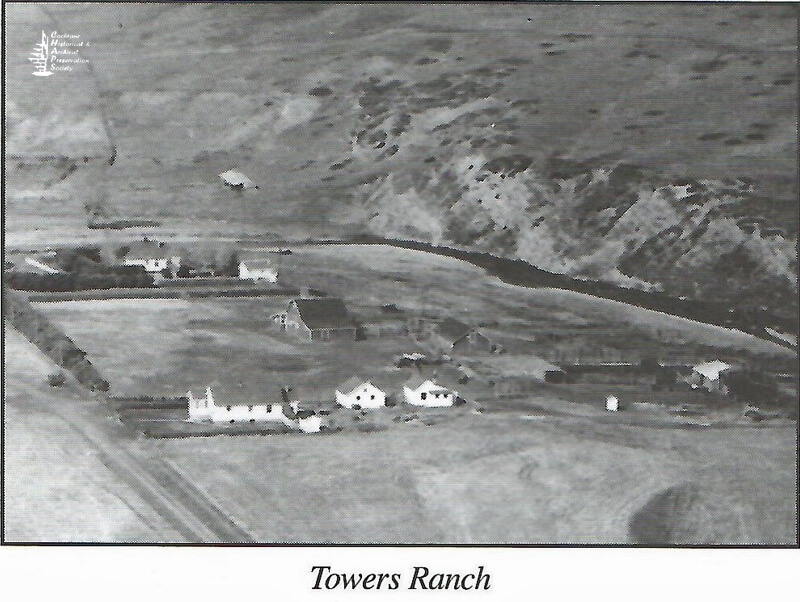
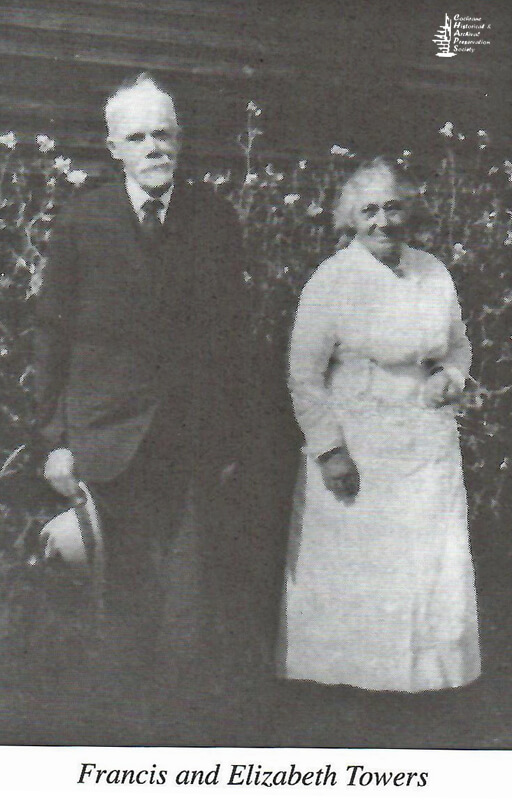

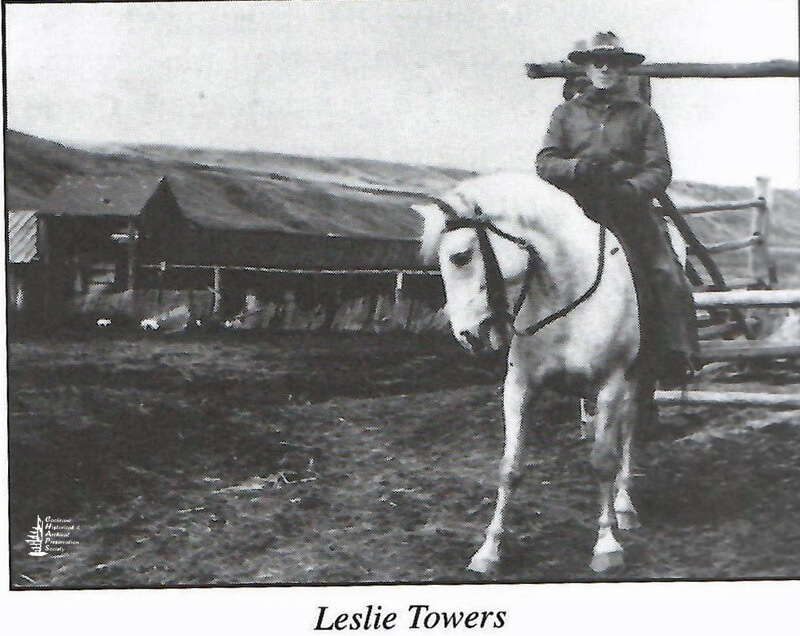
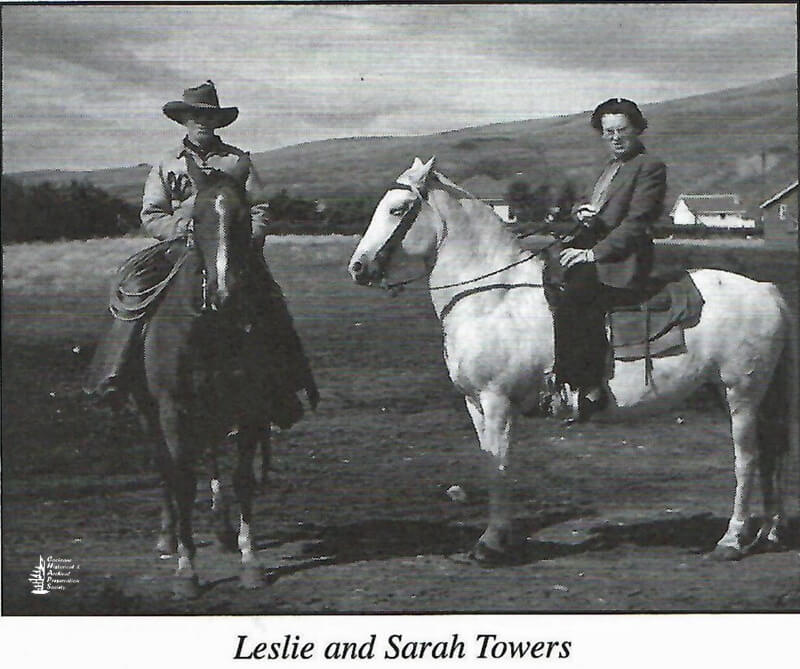
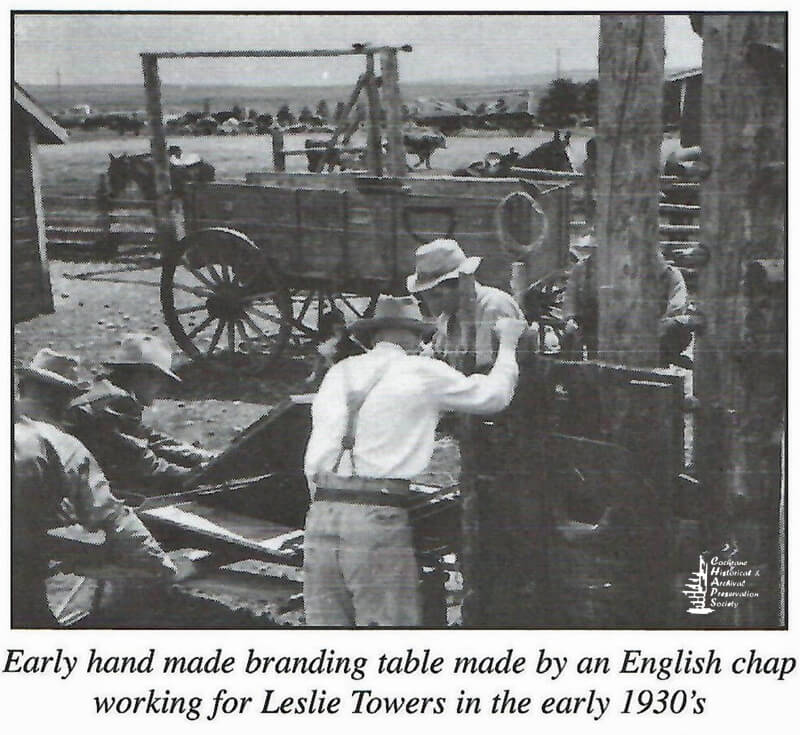

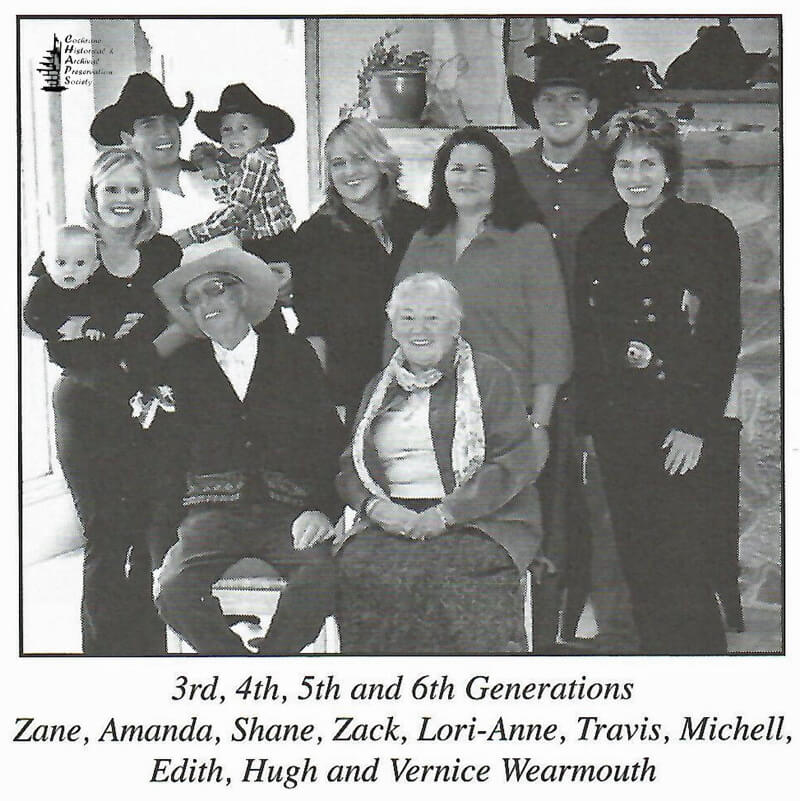
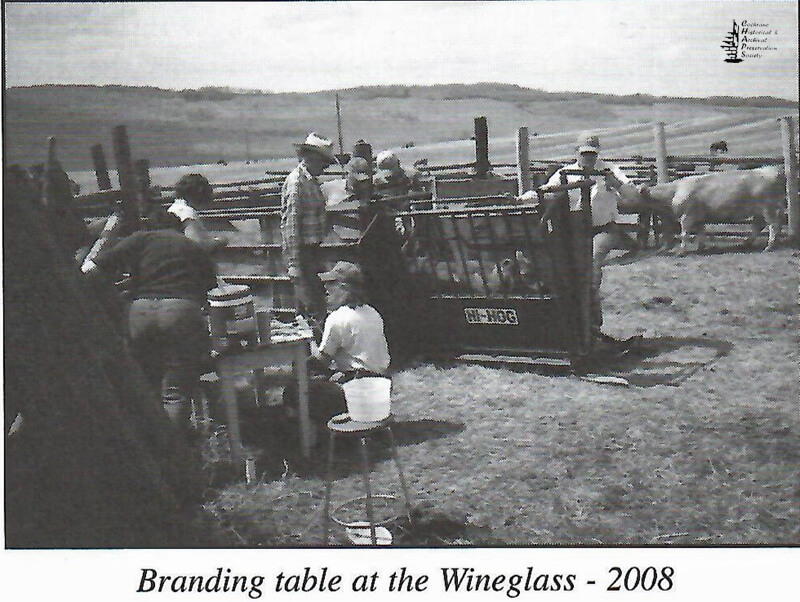
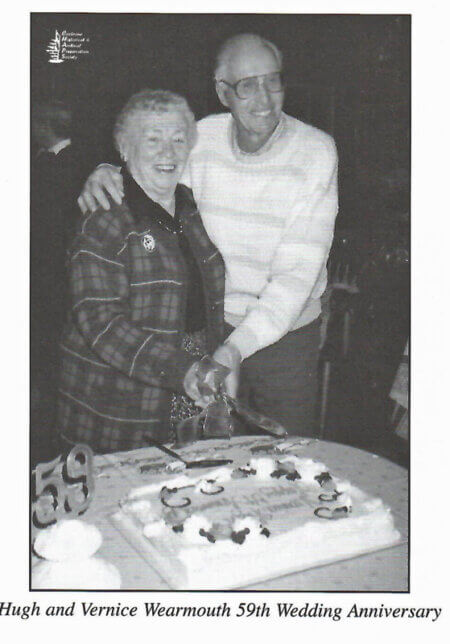


W
Wonderful history I have joined for more